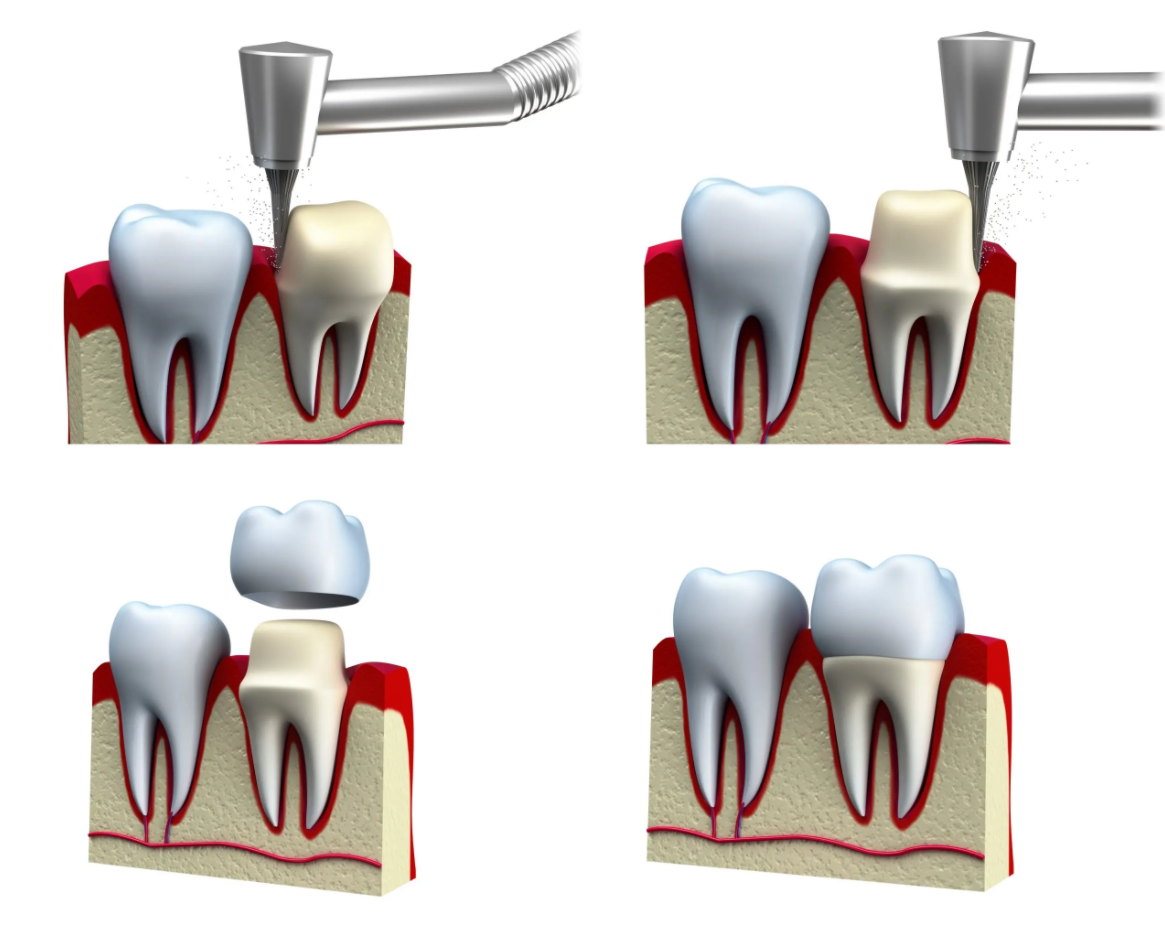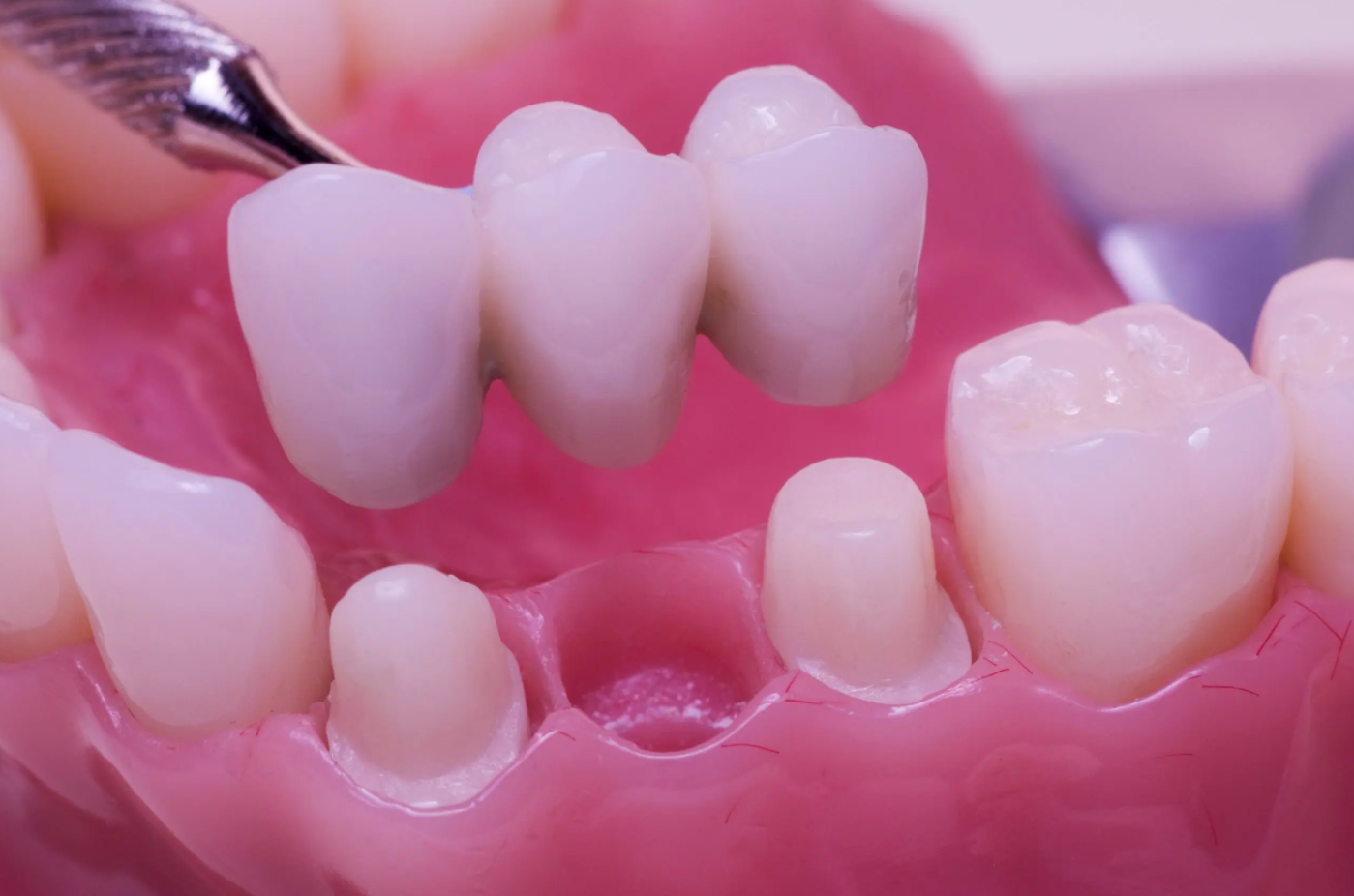Crown & Bridgework
Dentistry is an art as well as a science; dental crowns offer a perfect example of this. Dental crown is a cap that covers a tooth that has been decayed or damaged. When combined with dental bridgework it can even replace an entire tooth! A crown will help restore the functionality of a damaged tooth. We use high-end porcelians for our crowns so they are just as good, if not better, than a regular tooth. Not only will it restore functionality of a tooth but it will give a great cosmetic look!

What is a Dental Crown
A crown completely covers a tooth above the gum line. This is in contrast to a dental veneer, which only covers a tooth’s front surface and needs natural tooth structure to support it. If a tooth has been decayed or damaged aboved the gum line then a crown would be used instead of a veneer.
There are other materials besides porcelain that we can use to make dental crowns, depending on what qualities are most important. For durability, cast gold can’t be beat. However, this is not always the most aesthetic choice — especially towards the front of the mouth. Other possibilities include porcelain-fused-to-metal crowns (PFM), which have a metal interior for strength and a porcelain exterior for a more natural appearance, and all-porcelain crowns with zirconia, representing the strongest ceramic. We would be happy to discuss the pros and cons of these various options with you.
Crowning Or Capping A Tooth
Crowning or capping a tooth will usually take two to three visits. At the first visit, your tooth is prepared to receive its new crown. First, it is shaped to fit inside the new covering. This will involve some drilling to give the tooth a uniform shape. The tooth and the surrounding area will be numbed beforehand. If there is very little tooth structure left to begin with, the tooth may have to be built up with filling material, rather than filed down, to support the crown.
After the tooth is prepared, impressions of your teeth are taken, either digitally or with reliable, putty-like impression materials, and sent to the dental laboratory. There, the impressions will be used to make models of your teeth for the creation of a crown. The models will serve as guides to the highly skilled lab technicians, who will ensure that your new crown is designed to enhance your smile and function well within your bite.
Before you leave the office, a temporary crown will be attached to your tooth to protect it until the permanent crown is ready. At the second visit, your permanent crown will be attached to your tooth with either a resin that hardens when exposed to a special light source, or a type of permanent cement.
Creating A Bridge
Crowns can also be used to create a lifelike replacement for a missing tooth. This is done with bridgework, which spans the space of the missing tooth and requires at least three crowns. Two of those crowns will be placed over healthy teeth on either side of the missing tooth; these healthy teeth are referred to as abutment teeth. The two crowned abutment teeth become supports for a third crown placed in between them; that third crown is referred to as a pontic. If more than one tooth is missing, more crowns will be needed to bridge the gap in between the abutment teeth.
The number of abutment teeth necessary to replace missing teeth is influenced by the number of missing teeth, the size and length of the abutment tooth roots, the amount of bone support each abutment tooth has, as well as where in the mouth the missing tooth is located.
Caring For Your Crowns & Bridgework
Crowns and bridgework require the same conscientious care as your natural teeth. Be sure to brush and floss between all of your teeth — restored and natural — every day to reduce the buildup of dental plaque. When you have crowns, it is even more important to maintain your regular schedule of cleanings at the dental office. Avoid using your teeth as tools (to open packages, for example). If you have a grinding habit, wearing a nightguard would be a good idea to protect your teeth and your investment.
Special Offer!
$200 OFF*
Porcelain Crowns
*New patients only. Limited one per patient. No cash Value. Not valid with other offers or prior treatment. Cannot be applied to existing treatment plan
Contact Us!
Mention theses offers to beginning your journey to a better smile!
Crowns and Bridges
We will get back to you as soon as possible.
Please try again later.
Business Hours
- Monday
- Closed
- Tue, Thu
- -
- Wednesday
- -
- Friday
- -
- Sat - Sun
- Closed
All Rights Reserved | Beverly Dentistry




